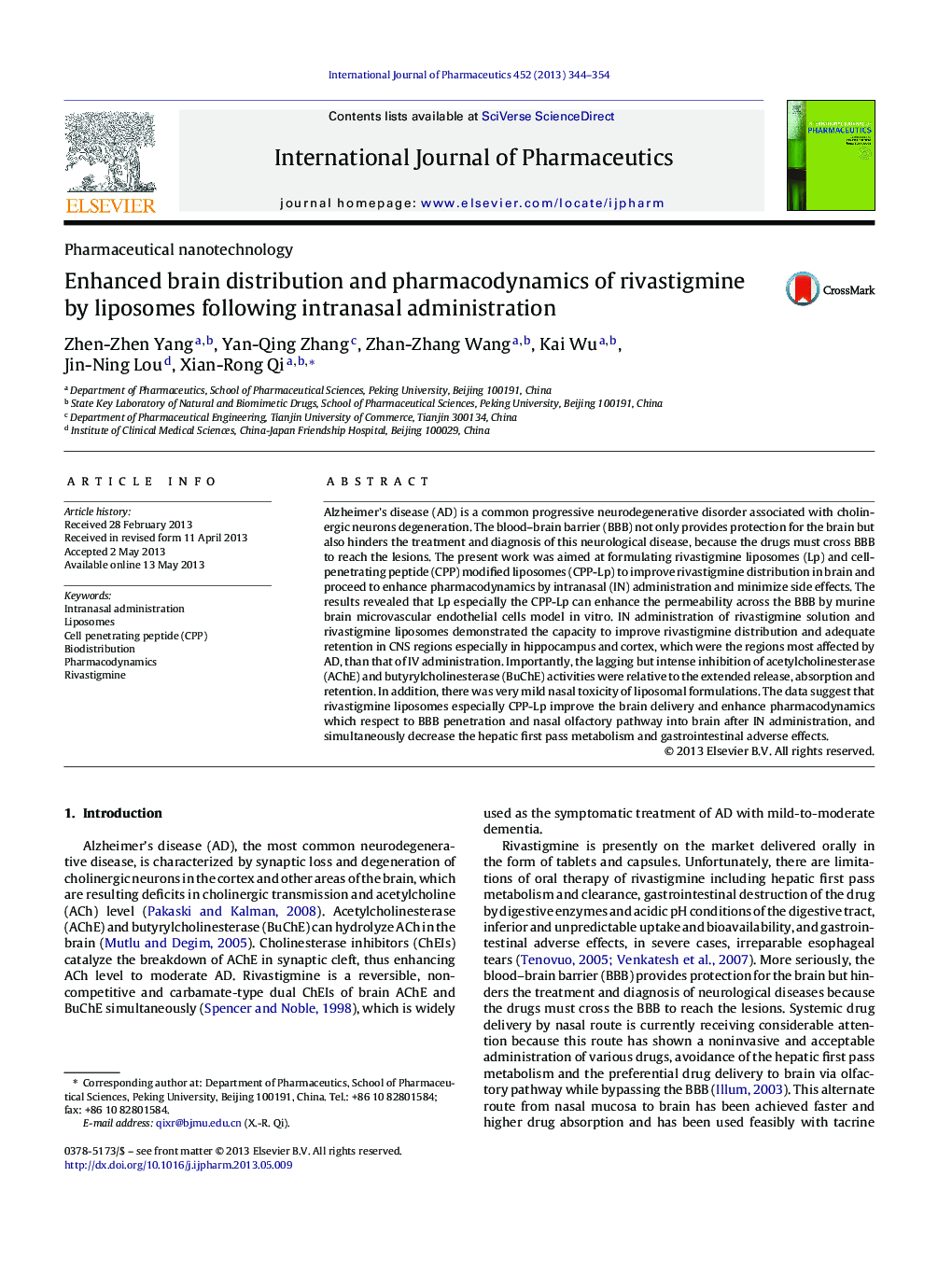| Article ID | Journal | Published Year | Pages | File Type |
|---|---|---|---|---|
| 2502302 | International Journal of Pharmaceutics | 2013 | 11 Pages |
•Lp and CPP-Lp can enhance the permeability across BBB in vitro.•IN administration improve drug distribution in CNS regions most affected by AD.•The lagging-intense inhibition of AChE and BuChE was related to distribution.•Very mild nasal toxicity of rivastigmine formulations was found.•Cp and CPP-Lp afford BBB penetration and nasal olfactory pathway into brain by IN administration.
Alzheimer’s disease (AD) is a common progressive neurodegenerative disorder associated with cholinergic neurons degeneration. The blood–brain barrier (BBB) not only provides protection for the brain but also hinders the treatment and diagnosis of this neurological disease, because the drugs must cross BBB to reach the lesions. The present work was aimed at formulating rivastigmine liposomes (Lp) and cell-penetrating peptide (CPP) modified liposomes (CPP-Lp) to improve rivastigmine distribution in brain and proceed to enhance pharmacodynamics by intranasal (IN) administration and minimize side effects. The results revealed that Lp especially the CPP-Lp can enhance the permeability across the BBB by murine brain microvascular endothelial cells model in vitro. IN administration of rivastigmine solution and rivastigmine liposomes demonstrated the capacity to improve rivastigmine distribution and adequate retention in CNS regions especially in hippocampus and cortex, which were the regions most affected by AD, than that of IV administration. Importantly, the lagging but intense inhibition of acetylcholinesterase (AChE) and butyrylcholinesterase (BuChE) activities were relative to the extended release, absorption and retention. In addition, there was very mild nasal toxicity of liposomal formulations. The data suggest that rivastigmine liposomes especially CPP-Lp improve the brain delivery and enhance pharmacodynamics which respect to BBB penetration and nasal olfactory pathway into brain after IN administration, and simultaneously decrease the hepatic first pass metabolism and gastrointestinal adverse effects.
Graphical abstractFigure optionsDownload full-size imageDownload high-quality image (202 K)Download as PowerPoint slide
